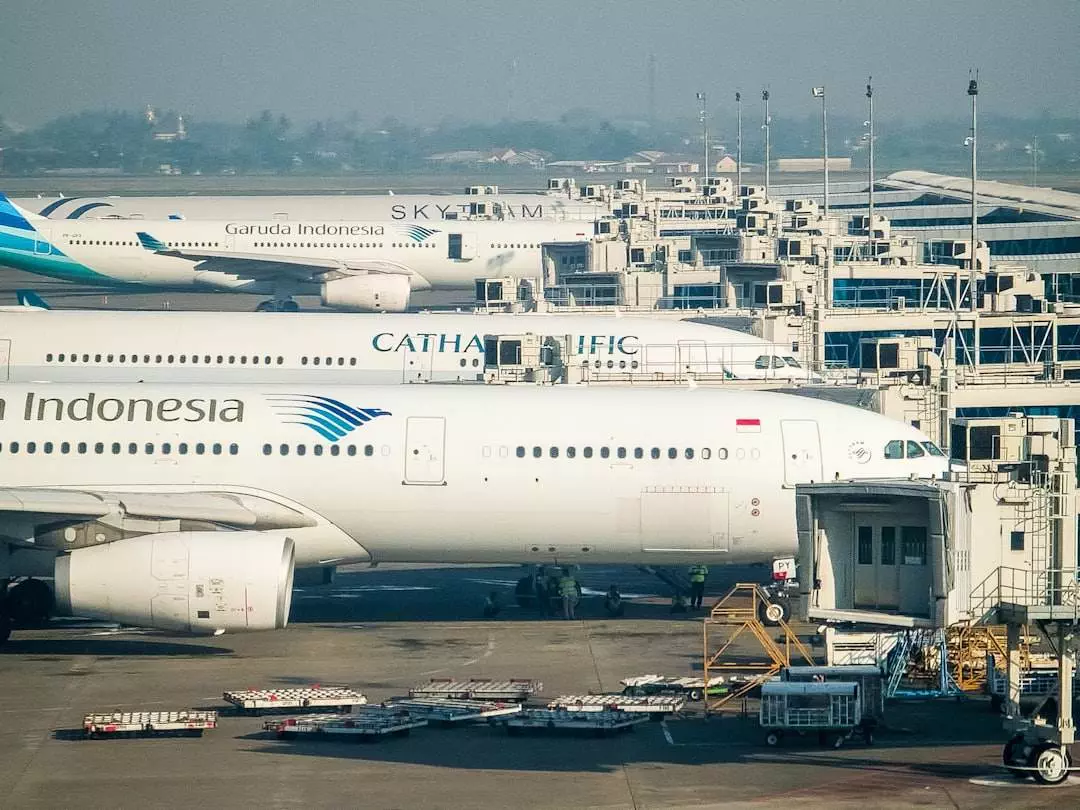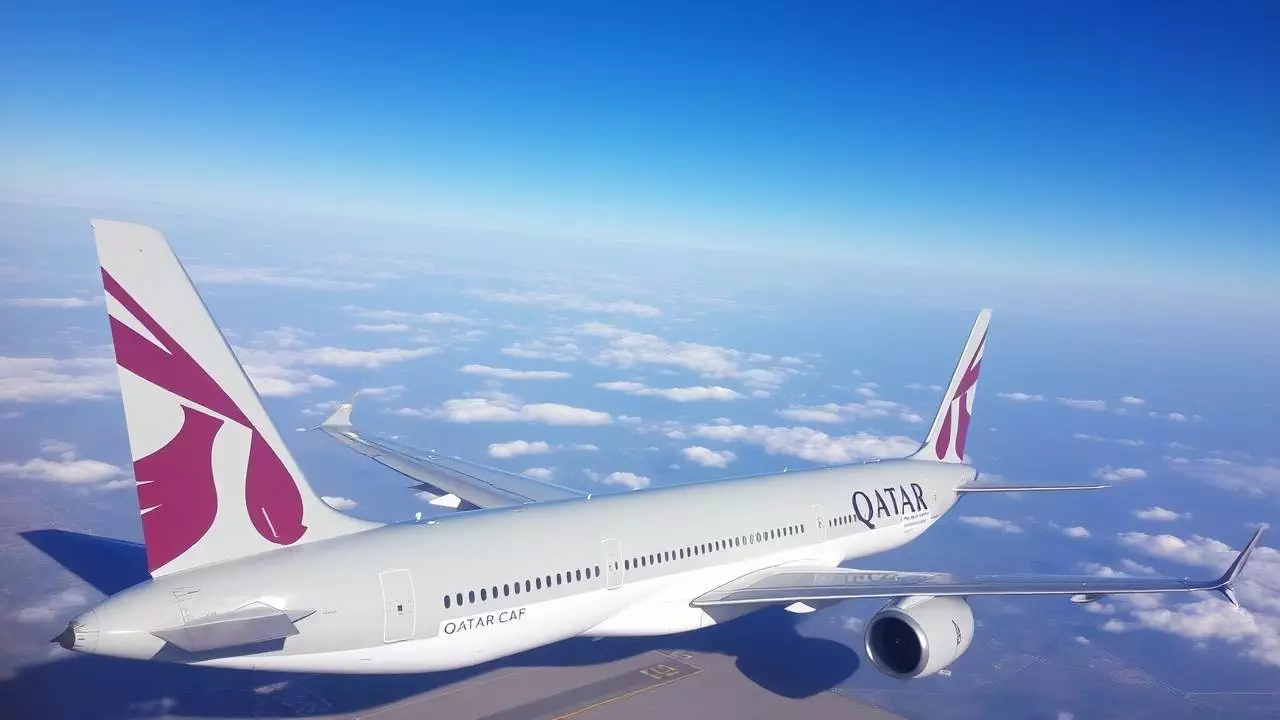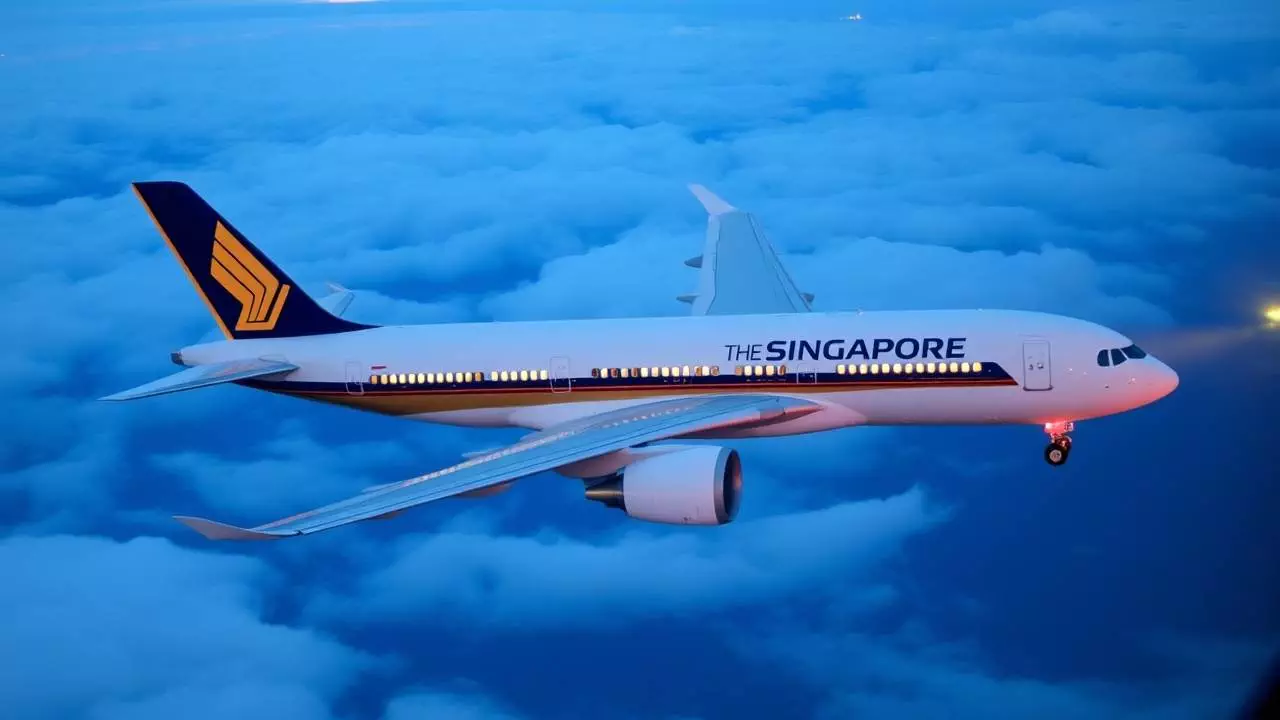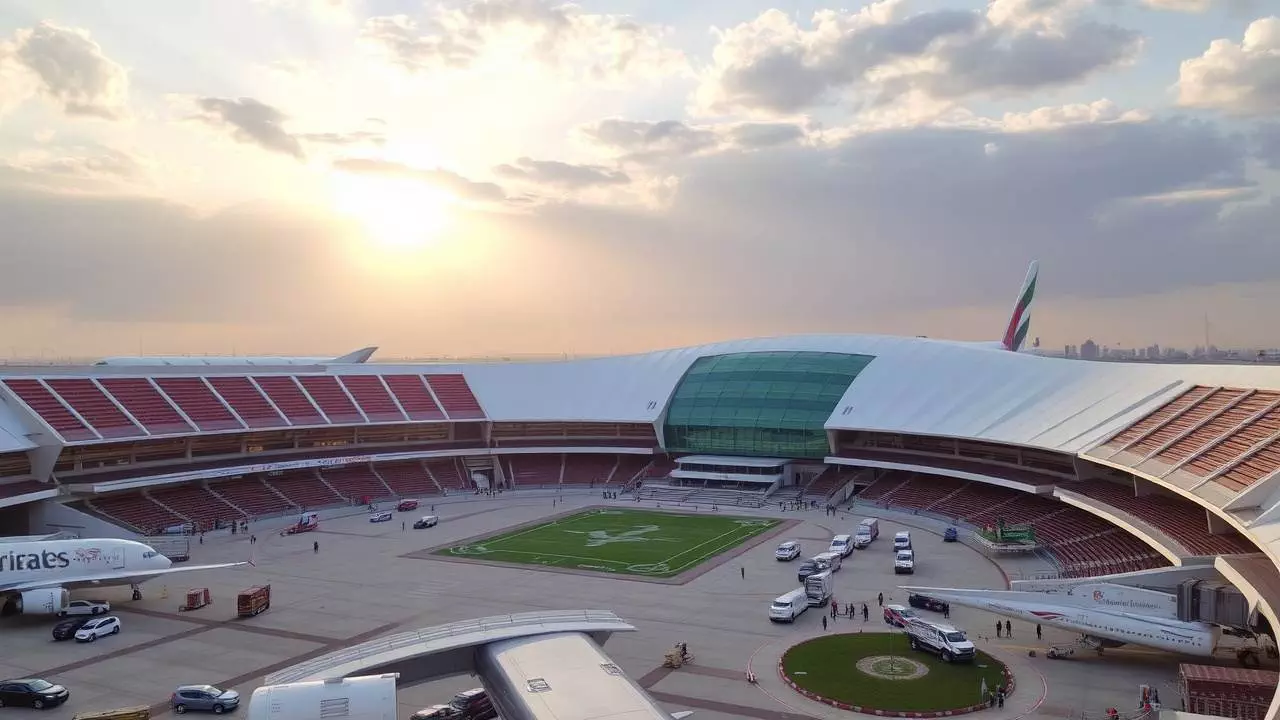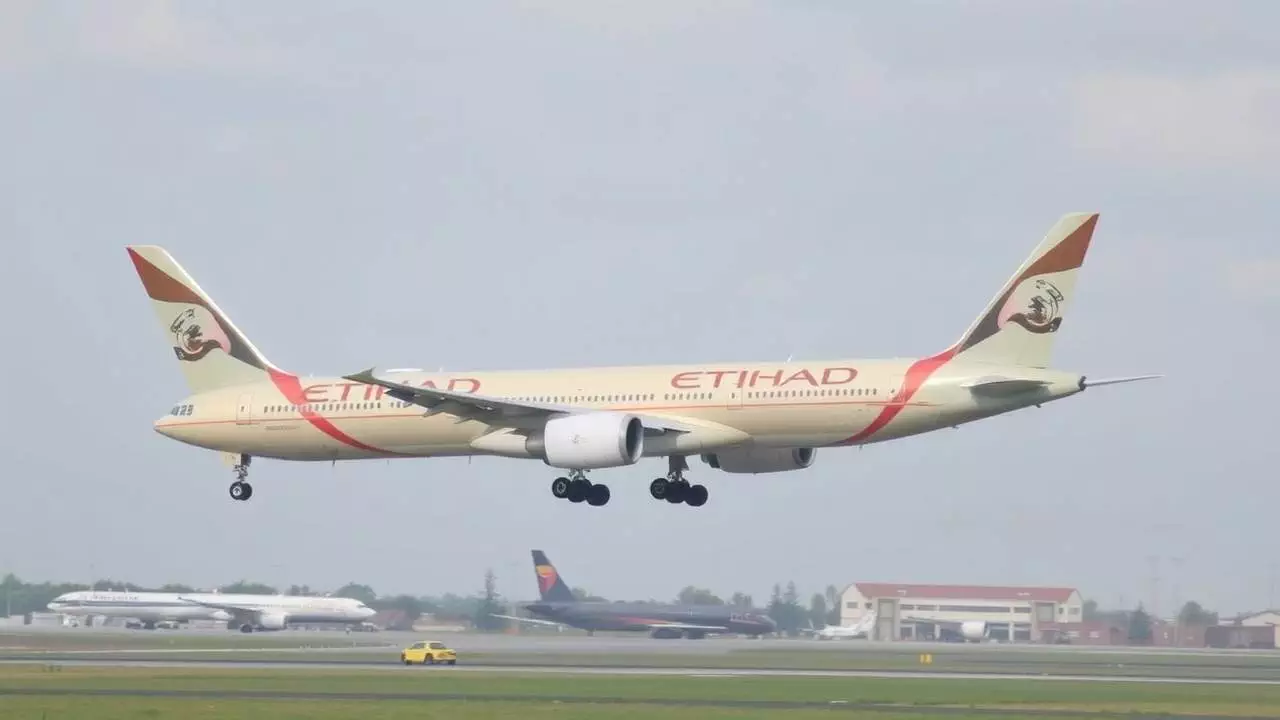Cathay Pacific Airways, one of the most recognized names in the aviation industry, was founded in 1946 by American expatriates Roy Farrell and Sydney H. de Kantzow. The airline began its journey with a modest operation, utilizing a single Douglas DC-3 aircraft to fly between Hong Kong and Shanghai.
The founders’ vision was to create a premium airline that would connect Asia with the rest of the world, and they quickly established a reputation for quality service and reliability. In its early years, Cathay Pacific primarily catered to cargo transport, but as the demand for passenger travel grew, the airline expanded its fleet and routes, marking the beginning of its transformation into a major international carrier. Over the decades, Cathay Pacific has undergone significant changes, adapting to the evolving landscape of global aviation.
The airline became a publicly listed company in 1984, which allowed it to raise capital for expansion and modernization. By the late 20th century, Cathay Pacific had established itself as a leading player in the Asia-Pacific region, known for its commitment to safety and customer service. The introduction of new aircraft models, such as the Boeing 747 and later the Airbus A350, enabled the airline to enhance its operational efficiency and passenger comfort.
Today, Cathay Pacific operates flights to over 190 destinations worldwide, making it a vital link in international air travel.
Key Takeaways
- Cathay Pacific was founded in 1946 in Hong Kong and has since grown to become one of the world’s leading airlines.
- The cabin crew plays a crucial role in ensuring the safety, comfort, and well-being of passengers during flights.
- Cabin crew members undergo rigorous training and recruitment processes to ensure they are well-equipped to handle any situation that may arise during a flight.
- Customer service is of utmost importance to Cathay Pacific, and the cabin crew plays a key role in delivering exceptional service to passengers.
- Flying with Cathay Pacific offers passengers a premium and comfortable experience, with a focus on providing top-notch service and amenities.
The Role of Cabin Crew
Safety and Emergency Procedures
Their responsibilities extend beyond simply serving meals and beverages; they are trained to handle a variety of situations that may arise during a flight. This includes managing in-flight emergencies, providing first aid when necessary, and ensuring compliance with safety regulations.
Creating a Welcoming Atmosphere
In addition to their safety responsibilities, cabin crew members are also tasked with creating a welcoming atmosphere on board. They engage with passengers, addressing their needs and preferences to enhance their travel experience. This involves everything from greeting passengers as they board to providing personalized service throughout the flight.
Personalized Service and Attention to Detail
Cabin crew members are trained to be attentive listeners, capable of anticipating passenger needs before they are even expressed. This level of service is what sets Cathay Pacific apart from many other airlines, as it fosters a sense of comfort and care that passengers appreciate.
Training and Recruitment
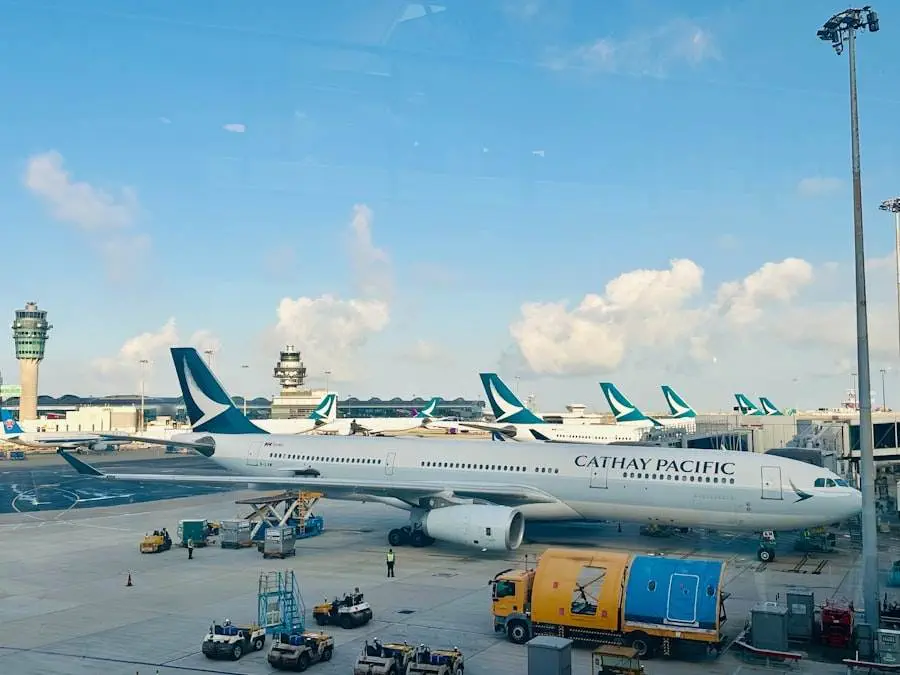
The recruitment process for Cathay Pacific cabin crew is rigorous and highly selective, reflecting the airline’s commitment to maintaining high standards of service. Candidates undergo multiple rounds of interviews and assessments designed to evaluate their interpersonal skills, problem-solving abilities, and adaptability. Successful applicants are then invited to participate in an extensive training program that covers various aspects of cabin crew duties.
This training includes safety procedures, emergency protocols, customer service techniques, and cultural sensitivity training to ensure that crew members can effectively interact with passengers from diverse backgrounds. Training at Cathay Pacific is not just about imparting knowledge; it also emphasizes practical experience. New recruits participate in simulated flight scenarios where they practice handling emergencies and providing customer service under pressure.
This hands-on approach helps build confidence and competence among cabin crew members. Additionally, ongoing training is a hallmark of Cathay Pacific’s commitment to excellence. Crew members regularly attend refresher courses to stay updated on safety regulations and service standards, ensuring that they are always prepared to meet the expectations of passengers.
The Importance of Customer Service
| Metrics | Data |
|---|---|
| Customer Satisfaction | 85% |
| Customer Retention Rate | 90% |
| Net Promoter Score (NPS) | 70 |
| Customer Service Response Time | 30 minutes |
| Customer Service Cost per Interaction | 5 |
Customer service is at the heart of Cathay Pacific’s operations, influencing every aspect of the passenger experience. The airline recognizes that exceptional service can turn an ordinary flight into a memorable journey. This philosophy is deeply ingrained in the culture of Cathay Pacific, where every cabin crew member is empowered to go above and beyond for passengers.
Whether it’s accommodating special requests or resolving issues promptly, the focus on customer satisfaction is paramount. The airline’s commitment to customer service is reflected in its various initiatives aimed at enhancing the passenger experience. For instance, Cathay Pacific has invested in technology that allows cabin crew to access passenger profiles during flights, enabling them to provide personalized service based on individual preferences.
This level of attention not only fosters loyalty among frequent flyers but also creates a welcoming environment for first-time travelers. Moreover, feedback from passengers is actively sought and utilized to improve services continually, demonstrating Cathay Pacific’s dedication to listening to its customers.
The Experience of Flying with Cathay Pacific
Flying with Cathay Pacific is often described as a premium experience characterized by comfort and attention to detail. From the moment passengers arrive at the airport, they are greeted with a sense of hospitality that sets the tone for their journey. The airline’s lounges offer a tranquil space for travelers to relax before their flights, complete with gourmet dining options and comfortable seating.
Once on board, passengers are treated to spacious seating arrangements and an array of entertainment options designed to make their flight enjoyable. In-flight service is where Cathay Pacific truly shines. Cabin crew members are trained to provide attentive service while maintaining a friendly demeanor.
Passengers can expect timely meal service featuring a selection of international cuisines prepared by renowned chefs. Additionally, the airline offers an extensive beverage menu that includes fine wines and signature cocktails. Throughout the flight, cabin crew members are readily available to address any needs or concerns, ensuring that passengers feel valued and cared for during their journey.
Challenges and Responsibilities of Cabin Crew
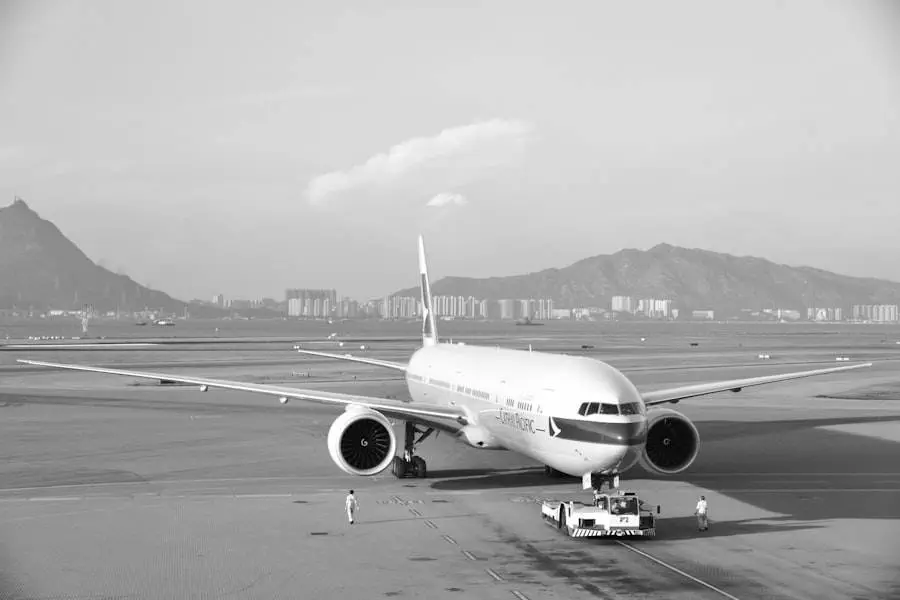
While being part of Cathay Pacific’s cabin crew is rewarding, it also comes with its share of challenges and responsibilities. One significant aspect is managing diverse passenger needs in a confined space. Cabin crew members must be adept at handling various personalities and situations while maintaining professionalism at all times.
This requires strong communication skills and emotional intelligence, as they often encounter passengers who may be anxious or upset due to travel-related stress. Moreover, cabin crew members must remain vigilant about safety protocols throughout the flight. They are responsible for conducting pre-flight safety checks, ensuring that emergency equipment is accessible and functional.
In-flight emergencies can arise unexpectedly, requiring crew members to act swiftly and decisively. This could involve anything from dealing with medical emergencies to managing unruly passengers. The ability to remain calm under pressure is essential for cabin crew members at Cathay Pacific, as their actions can significantly impact passenger safety and comfort.
Awards and Recognition
Cathay Pacific has garnered numerous awards and accolades over the years, solidifying its status as one of the world’s leading airlines. Recognized for its exceptional service quality, the airline has consistently ranked highly in various industry surveys and awards programs. For instance, Skytrax World Airline Awards have frequently honored Cathay Pacific with titles such as “Best Airline in Asia” and “Best Business Class.
The recognition extends beyond just customer service; Cathay Pacific has also been acknowledged for its operational efficiency and innovation in sustainability practices. The airline has made significant strides in reducing its carbon footprint through initiatives such as investing in fuel-efficient aircraft and implementing waste reduction programs on board. These efforts have earned Cathay Pacific accolades from environmental organizations, further enhancing its reputation as a responsible carrier committed to sustainable aviation practices.
Future of Cathay Pacific Cabin Crew
As the aviation industry continues to evolve post-pandemic, the future of Cathay Pacific’s cabin crew will likely be shaped by several factors including technological advancements and changing passenger expectations. The integration of artificial intelligence and automation into various aspects of air travel may alter traditional roles within cabin crews. However, while technology can enhance operational efficiency, the human touch remains irreplaceable in providing exceptional customer service.
Looking ahead, Cathay Pacific is expected to continue investing in its cabin crew through ongoing training programs that emphasize adaptability and resilience in an ever-changing environment. As passenger preferences shift towards more personalized experiences, cabin crew members will need to be equipped with skills that allow them to cater to individual needs effectively. The airline’s commitment to fostering a culture of excellence will ensure that its cabin crew remains at the forefront of delivering outstanding service while navigating the challenges that lie ahead in the dynamic world of aviation.
Cathay Pacific Cabin Crew members may find it beneficial to learn more about the importance of estate planning by visiting the Ontario Will Registry website. By registering their wills with the Ontario Will Registry, cabin crew members can ensure that their final wishes are carried out and their loved ones are taken care of. To read more about the Ontario Will Registry and how it can benefit individuals, visit https://ontariowillregistry.com/.
FAQs
What are the requirements to become a Cathay Pacific cabin crew member?
To become a Cathay Pacific cabin crew member, applicants must meet certain requirements such as a minimum age of 18, a minimum arm reach of 208cm, fluent in English and one of the following Asian languages: Cantonese, Mandarin, Japanese or Korean, and have a valid passport with the right to live and work in Hong Kong.
What is the training process for Cathay Pacific cabin crew members?
Cathay Pacific cabin crew members undergo a rigorous training process which includes safety and emergency procedures, service and product knowledge, grooming and deportment, and customer service skills. The training is conducted at the Cathay Pacific City complex in Hong Kong.
What are the responsibilities of a Cathay Pacific cabin crew member?
The responsibilities of a Cathay Pacific cabin crew member include ensuring the safety and security of passengers, providing excellent customer service, serving meals and beverages, and maintaining the cleanliness and tidiness of the cabin.
What are the benefits of working as a Cathay Pacific cabin crew member?
Working as a Cathay Pacific cabin crew member comes with a range of benefits including competitive salary and allowances, flexible work patterns, discounted travel benefits for employees and their families, and opportunities for career advancement within the company.
What is the uniform for Cathay Pacific cabin crew members?
Cathay Pacific cabin crew members wear a distinctive uniform designed by renowned fashion designer Eddie Lau, which includes a red and white blouse, a red skirt, and a scarf for female crew members, and a dark suit with a red tie for male crew members.
